Marriott Bonvoy embraces AI to better match travellers with their dream vacays

Ever feel like going on a holiday but have no idea where to go? Marriott Bonvoy’s new generative AI tool can save the day.
Homes & Villas by Marriott Bonvoy is now testing a search engine that incorporates AI, allowing travellers to find their ideal home and destination.
Basically, all you need to do is type your preferences in the search bar, and the site will match you to a range of options from its list of 140,000 available properties on the Homes & Villas by Marriott Bonvoy platform.

This feature is expected to become widely available to all visitors first on the website and then on the mobile app in the coming weeks. Of course, visitors will still have the option to use the traditional search functionality.
The search with AI tool was developed in collaboration with Publicis Sapient, a software company based in Massachusetts, USA.
“Using the latest technologies, our new AI search tool breaks new ground among vacation rental platforms by allowing travellers to search without a specific destination,” said Jennifer Hsieh, Vice President, Homes & Villas by Marriott Bonvoy.
Homes & Villas by Marriott Bonvoy is a global home rental offering launched in 2019. It seeks to bring Marriott’s 90+ years of hospitality expertise to the home rental market, focusing on the premium and luxury tier of rental homes.
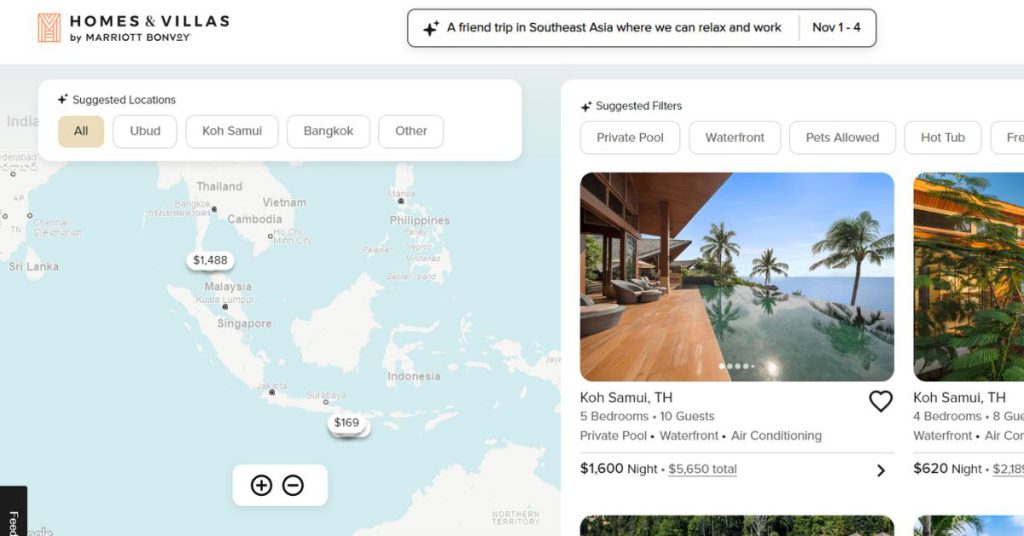
Ensuring that every listed home is on par with their standards, Marriott works with select property management companies to curate its list of properties.
Testing it out
Some sample prompts provided in the press release include:
- I want to travel to London, Paris, or Vienna and stay in the city centre
- Best A-frame home in the mountains with a fireplace and stunning view
- I want to take a trip to California this summer where I can bring my dog
- I’m looking for a private villa in Asia for six people with a butler
- I need a beachfront home in the Caribbean perfect for a bachelorette celebration
To start, I searched for “an affordable destination with great views, good food, and suitable for me and my three colleagues.”
The top pick was a place in Lovina, Indonesia. With four beds, four baths, and fit for 11 people, I feel like it would be a bit overkill for a group of four.
But then, perhaps the site considered the fact that we were colleagues and hence probably wanted our own rooms. When I tweaked my search to say “siblings”, the Lovina suggestion was still offered, but the first pick became a place with just two rooms.
The site was also able to understand that I was looking for a place for four, and automatically tweaked the number of guests in the “filter and sort” setting. When searching for a place “less than $100”, they also intuitively changed the price range in the filter.
Going minimalist with a search for “cheapest options”, I was told “that might be off topic”. When I switched to “most affordable destinations”, though, I was shown properties in KL, Vietnam, Thailand, and Indonesia.

To push the boundaries of the AI, I searched up “a place with terrible weather”. Apparently, the top pick was a property in Fairbanks, Alaska, which sounds like it could be right.
Essentially, this tool functions like a filtered search, except it’s based on natural language processing.
While it may not be the most helpful for people who know specificities on what they want, this feature feels ideal for people who are looking for inspiration.
The future is here
In the future, AI-powered searches will probably become the norm, but for now, it remains quite a novel experience. So, it’s interesting to see established global companies like Marriott Bonvoy recognise the importance of leveraging AI, and do it in a way that actually makes sense for the end consumer.
The question now is whether we’ll start seeing this being implemented in other Marriott Bonvoy brands.
According to the press release, this search with AI functionality is being tested “initially as a part of the broader technology transformation at Marriott International to unlock value for customers with more seamless, personalised, and engaging ways to experience travel”.
So, yes, it does seem like more hospitality platforms will be including AI technology in their platforms down the road.
- Learn more about Homes & Villas by Marriott Bonvoy here.
- Read other articles we’ve written about artificial intelligence here.
Also Read: Employees need a Copilot to boost productivity & ease brain drain. This webinar shows how.
With partners like OldTown White Coffee, this farm seeks to bring M’sians cage-free eggs
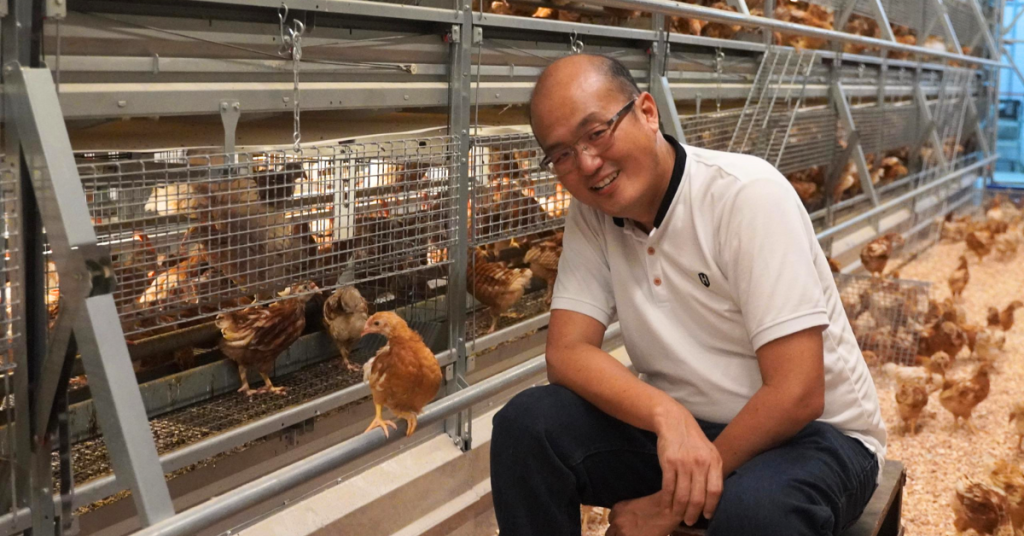
Did you know that Malaysia ranked the lowest, along with Vietnam and Bangladesh in the Asia Cage-Free Benchmark’s 2024 Report, meaning we’ve had the least progress in the transition to cage-free farming?
I didn’t, until I attended an event called The Wings of Progress for Better Welfare on March 22.
Thankfully, that event was actually spotlighting an effort that’s tackling this issue. Specifically, it was a signing ceremony for Malaysia’s first cage-free aviary, which will be launched by Teong Choon (TC) Poultry Farm.
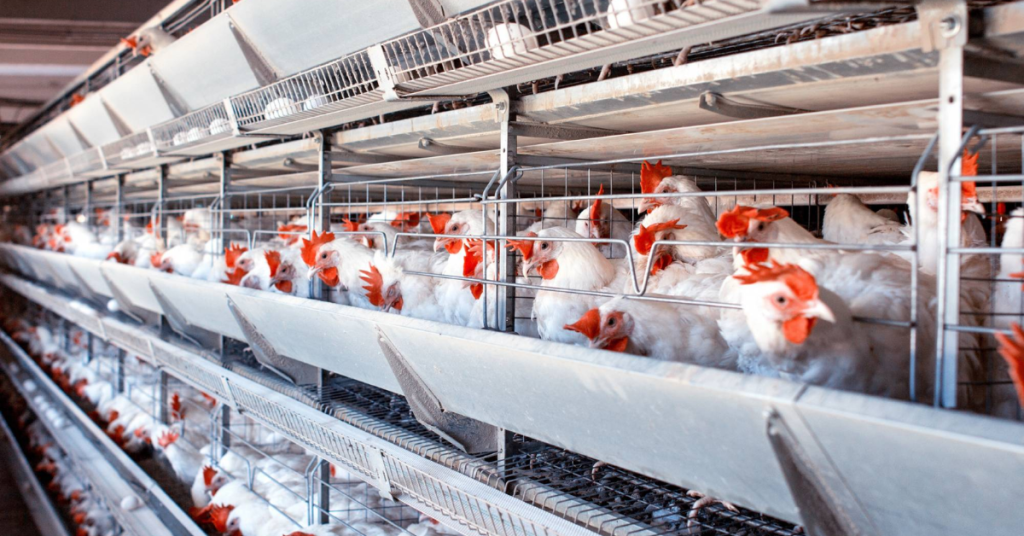
Incorporated in 1984, the Malaysian company started out with traditional open house farming, producing 28,000 eggs per day at that time. In 2015, they introduced a new closed house farming method to improve efficiency, and by 2020 was producing 110,000 eggs per day.
Now in 2024, the company seeks to roll out the first large-scale commercial cage-free aviary system in not just Malaysia but Southeast Asia. With this, they target to produce over 60,000 cage-free eggs per day by the end of Q2 of 2024.
Cracking down on the issue
Set to open around June this year, this aviary will be going against the inhumane norm of using battery cages to rear egg-laying hens.
At the event, Dr Sara Shields of Humane Society International (HSI), shared that hens are curious, active, and social animals—but most of the 105 million hens used for egg production in Malaysia are confined to small wire cages.
These cages typically offer each hen less space than a single letter-sized sheet of paper.
Dr. Saravanakumar Supramaniam Pillai (Senior Adviser, Farm Animal Welfare, Policy and Engagement, for HSI Malaysia) added: “Cage confinement is outdated and doesn’t meet the scientifically documented behavioral needs of the hens.”
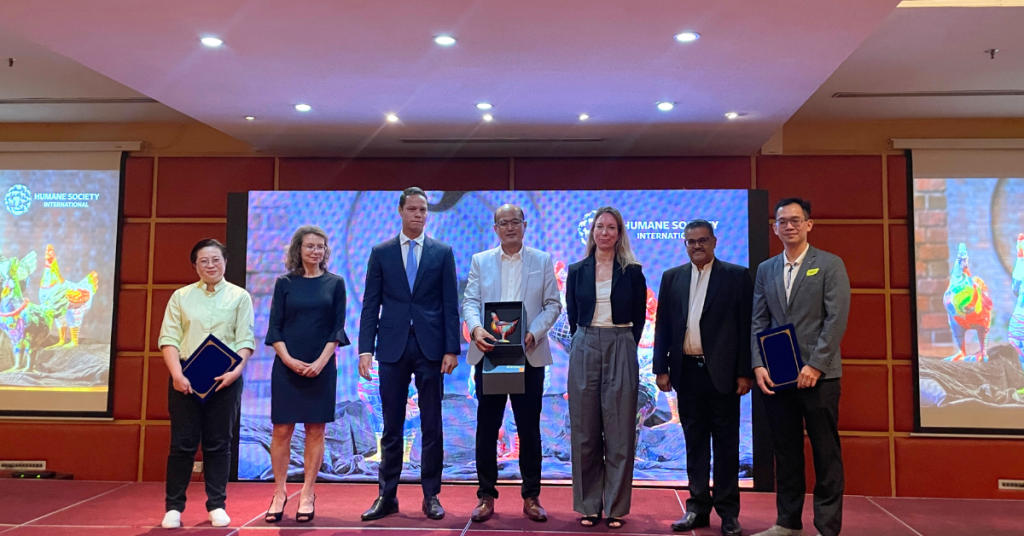
“Hens kept for egg production are sentient beings and we must provide them with good welfare,” he reminded.
So, instead, TC Poultry Farm will utilise a cage-free aviary housing system, allowing more freedom of movement for the birds to walk, run, jump, and stretch their wings. The first barn will house over 16,000 hens.
This expansion will be done with equipment provided by Big Dutchman, a poultry equipment company headquartered in Germany. The upcoming aviary will also leverage Internet of Things (IoT) to automate the farm, ensuring the hens are well taken care of.
HSI has also facilitated technical assistance for TC Poultry Farm, and will continue to provide such support to the farm through their expansion and operation of the new barns.
Is the price right?
The resulting eggs from this aviary will be sold under the brand of Genki Eggs.
But as consumers, you may be wondering—at what cost?
While a specific figure has not been ascertained, since the farm is not yet up and running, a figure thrown around during the Q&A session was at least 30 sen more than your usual pack of eggs—not a tall order for those willing to pay a premium for animal welfare.
In any case, it’s important to keep in mind that in Malaysia, there is a ceiling price for eggs.
You might also be wondering whether these eggs have better nutritional value, health benefits, or improved taste. But the likely answer, based on others’ research, is no.
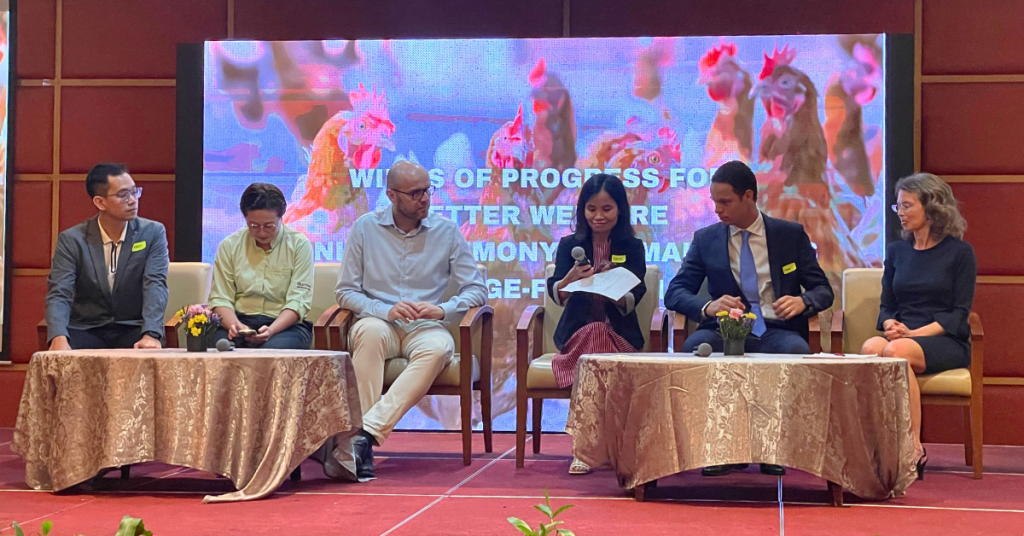
As Dr Sara Shields pointed out during the Q&A session, the point of cage-free eggs is not to serve us consumers, but rather our feathered friends.
Something else that was clarified during the Q&A was the difference between “cage-free” and “free-range”. For the latter, it involves outdoor access, which arguably offers more freedom for the hens. But that mobility might be dangerous and expensive as there can be natural predators that loom outside the farm compounds.
Birds of a feather
To really set this cage-free journey up for success, though, it’ll take more than just one farm.
That’s why it’s critical that big names such as OldTown White Coffee has chosen to work with TC Poultry Farm to offer eggs from cage-free hens throughout the chain’s Malaysian locations.
Joining them is Beacon Mart, the business behind Beacon Chicken, who has committed to exclusively offer eggs from cage-free hens across their grocery chain by 2030.
With this, it seems like a major revenue stream for TC Poultry Farm may lie in the B2B sector, offering F&B and retail businesses an opportunity to advocate for animal welfare.
Even though the eggs may not taste any different from the regular ones, we’re excited to know that Malaysia has taken a step forward in improving our egg industry, transitioning from battery cages to a more humane cage-free system.
- Learn more about Teong Choon Poultry Farm here.
- Read other articles we’ve written about Malaysian startups here.
Also Read: Employees need a Copilot to boost productivity & ease brain drain. This webinar shows how.
Featured Image Credit: Tiew Siew Sien, Managing Director at Teong Choon Poultry Farm
Velvet Cinemas’ in-house restaurant convinced us that GSC should be doing more F&B
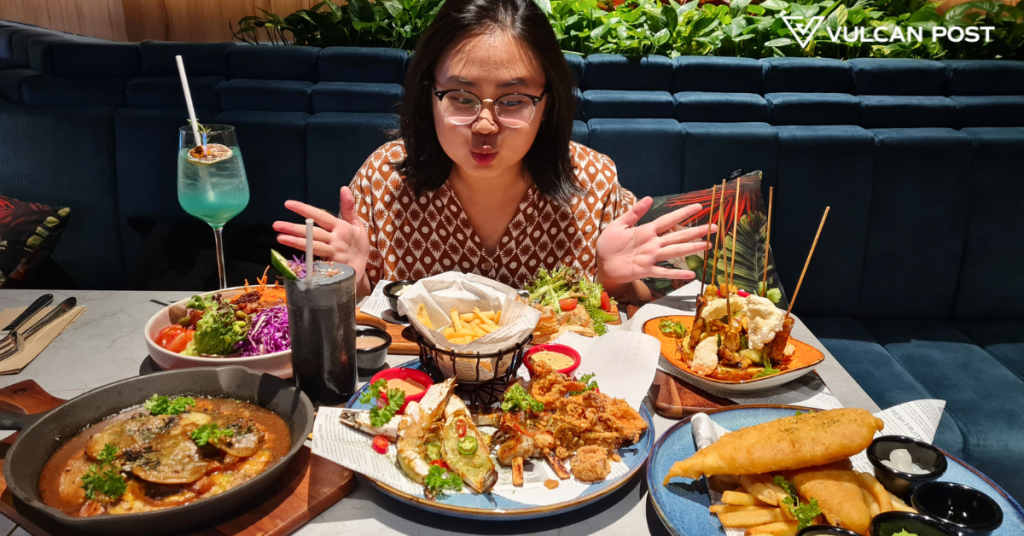
When you get to the top floor of 163 Retail Park, Mont Kiara, you’ll find Golden Screen Cinema’s (GSC) Velvet nestled in a corner beside a skating rink.
Launched in November last year, it’s a themed cinema that reimagines retro cinematic experiences, complete with vibrant F&B and lifestyle offerings.
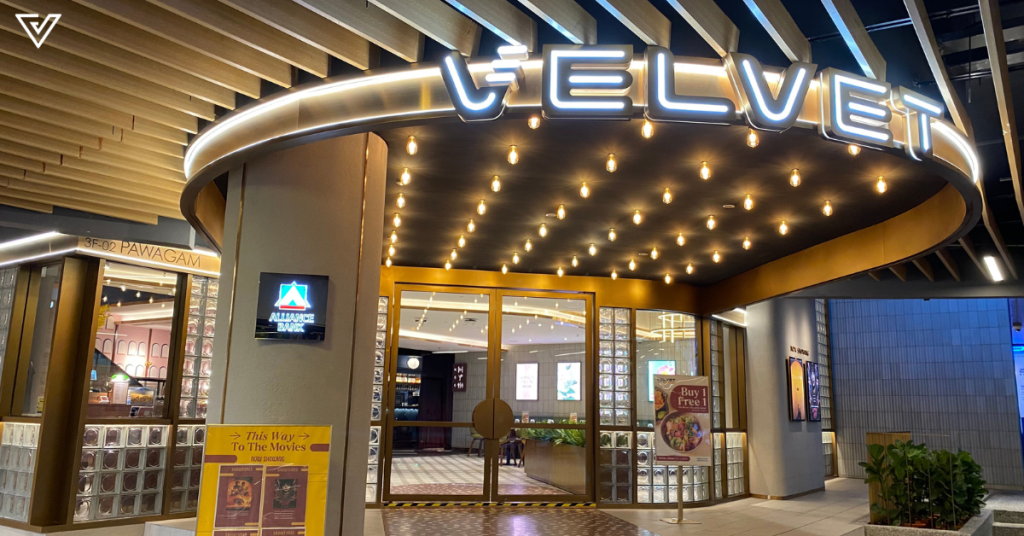
The entrance looks like any other F&B establishment, with square tables and leather-clad chairs. But venture further in and you’ll feel transported back to a 60s, swanky gentlemen’s club.
Coming in shades of teal and tangerine, the booth and solo seats are made with velvet fabric. Rows upon rows of framed photographs featuring classic cinema icons line the walls.
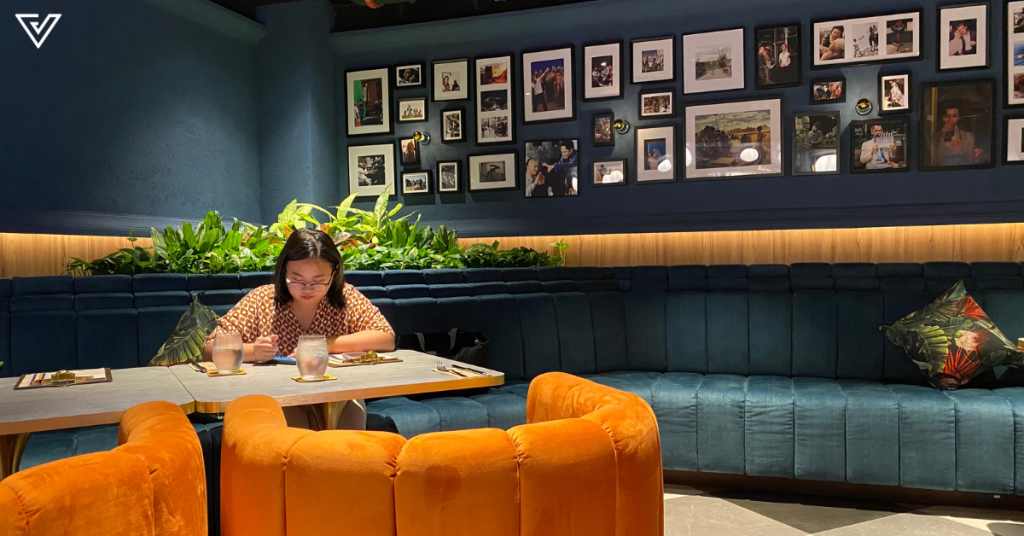
Taking centre stage is the karaoke screen that allows customers to belt their hearts out. Topping it off is a classic bar at the side that completes the retro look GSC aimed to create.
Overall, the old Hollywood-like environment seems to be enticing us to just kick back and relax. So that’s exactly what my colleague Claudia and I did as we dined at the cinema’s in-house restaurant.
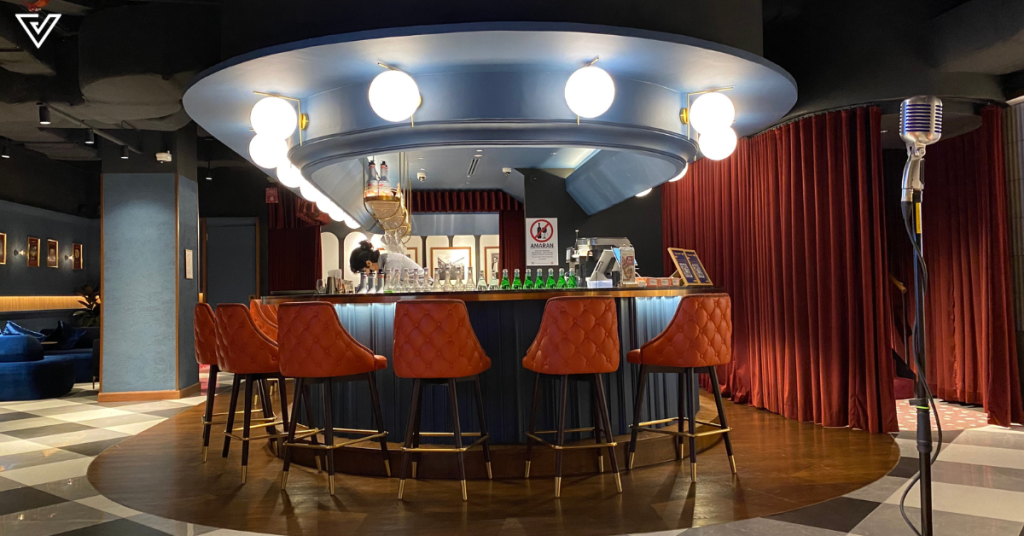
A wide selection of Western delights
Contrary to what you might think, the restaurant is actually open to everyone. So you’re welcomed to grab a bite here even if you’re not planning to catch a movie in one of its 163 seats.
The menu is a curation of hearty Western dishes that lived up to our expectations with good portions.
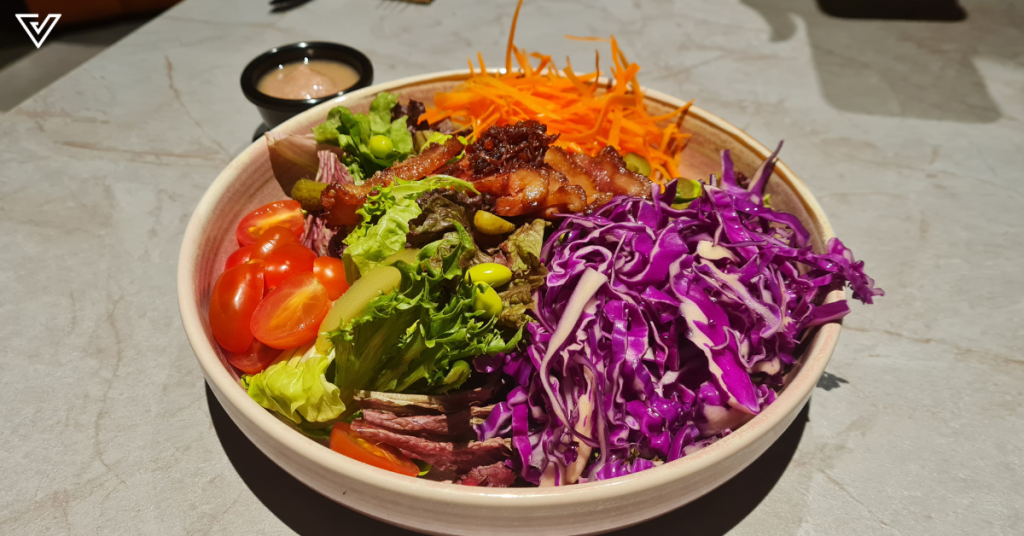
Velvet served us some of its house specialties as an introduction to its kitchen, namely:
- Tea-Smoked Duck Salad (RM35)
- Ocean Trio Sharing Platter (RM79)
- Fish & Chips (RM59)
- Cajun Chicken Quesadilla (RM32)
- Lancashire Lamb Hotpot (RM39)
We kicked off the meal with its Tea-Smoked Duck Salad, which is an Asian-inspired XO-marinated salad topped with Italian dressing. This was a good start that prepared us for the fusion medley ahead.
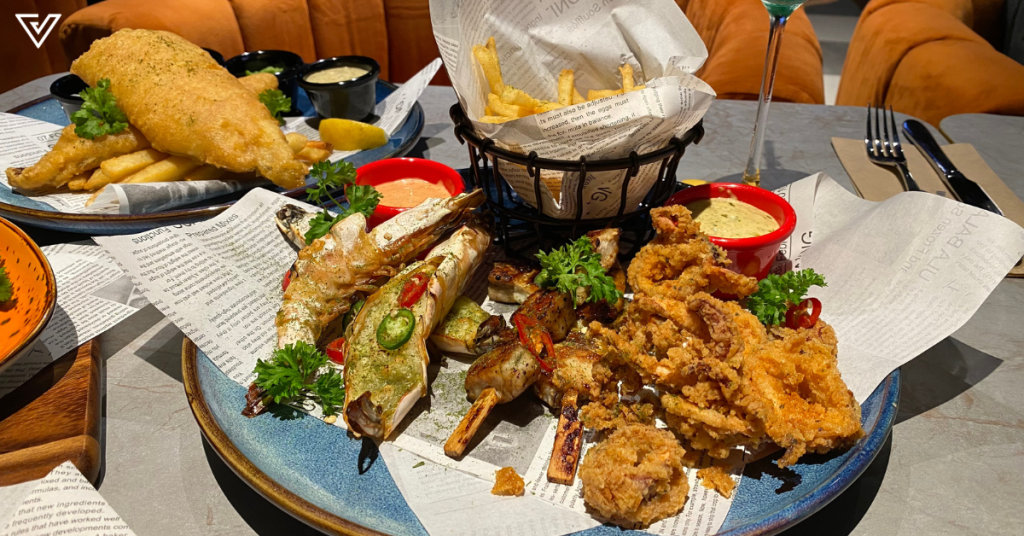
Then we moved on to the Ocean Trio sharing platter that had battered fried calamari, and grilled Cajun prawns and sea bass fish brochettes. The perfectly cooked grilled prawns were topped with garlic sauce that reminded us of the garlic-ginger paste you’d typically pair with Hainanese chicken rice.
Velvet’s Fish & Chips uses Hoki fish (also known as Blue grenadier) from the Netherlands. It has a higher fat content compared to most other white fish, making it flavourful.
If you’re like me and dislike strong fishy tastes then this would be a good bet because it has none of that. The same goes for the Ocean Trio as well, but I believe adding pineapple instead of leek to the fish brochettes would add a good tangy kick to the dish.
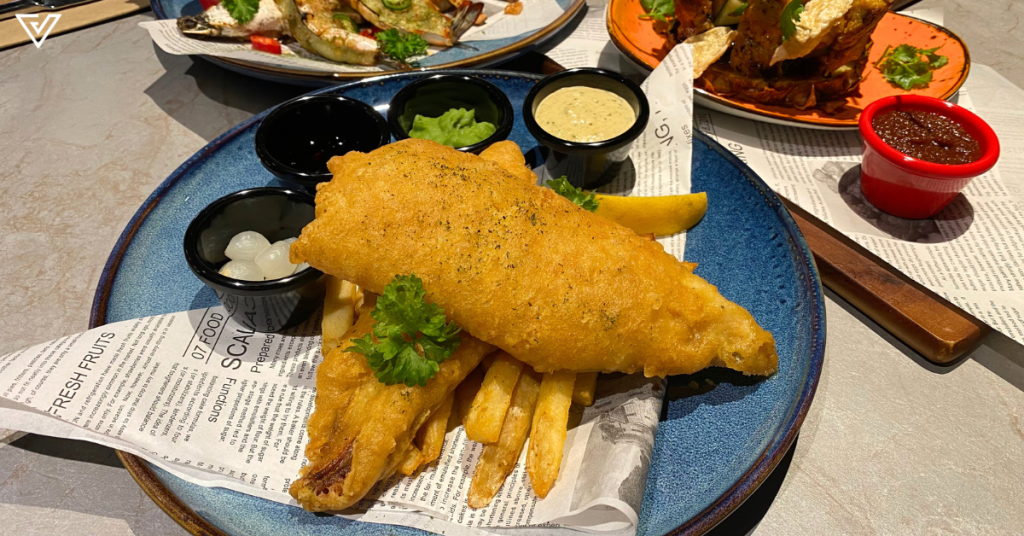
The dish was served with tartar sauce which tasted more eggy than usual and had a bit of texture. In place of mushy peas, the restaurant uses what tasted like mashed roasted Japanese peas to me. It also came with mildly sweet pearl onions that were a good palate cleanser.
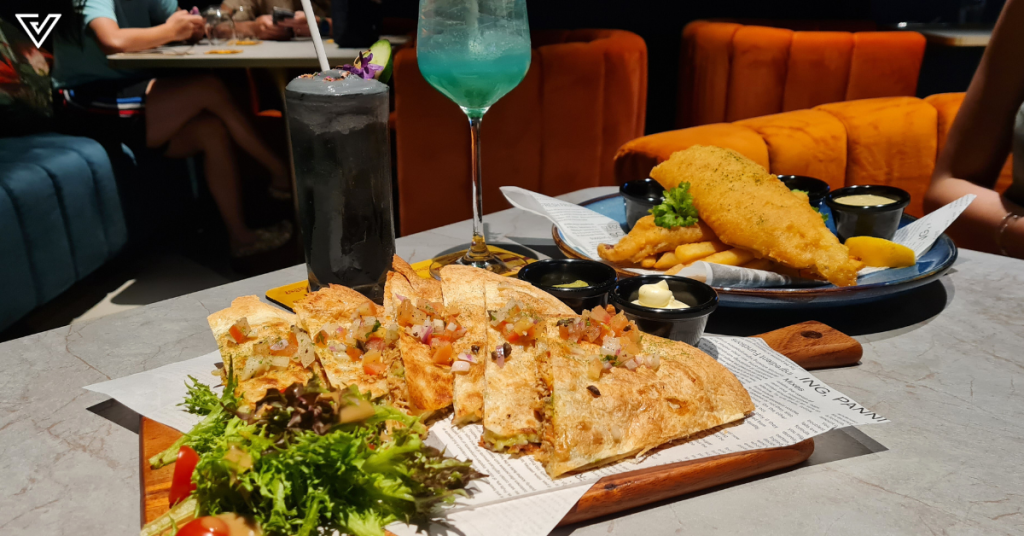
The Cajun Chicken Quesadilla was what you’d expect a classic Mexican quesadilla to be—warm, cheesy, and packed with just enough flavour.
But my favourite dish of the night had to be the Lancashire Lamb Hotpot. It’s basically a braised lamb shoulder stew cooked with thinly-sliced potatoes. The meat was tender and flavours robust, though I wished there was more broth to slurp up.
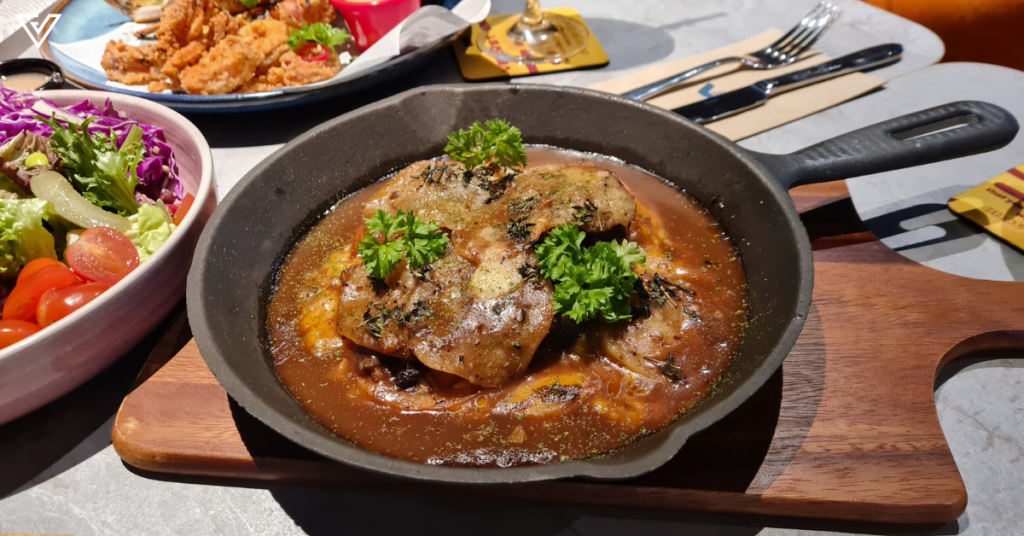
To quench our thirst, we opted for our server’s recommendations—a Galaxy Yuzu Lemonade soda (RM17) and a Black Swan mocktail (RM26). The latter is inspired by the 2010 film of the same name featuring Natalie Portman.
Both of the beverages weren’t too sweet, and they tied up our meals beautifully. Alcoholic concoctions weren’t available yet at the time of writing.
Food for the soul and the community
Aside from those, Velvet also has other dishes like Double Wagyu Matcha Burger (RM59) and desserts such as English Trifle (RM25). Its kids menu has quite sassy dishes like “I Don’t Know” (mac and cheese), “I’m Not Hungry” (bangers and mash), and “I Don’t Care” (chicken katsu burger), phrases you might hear a sulky child mutter.
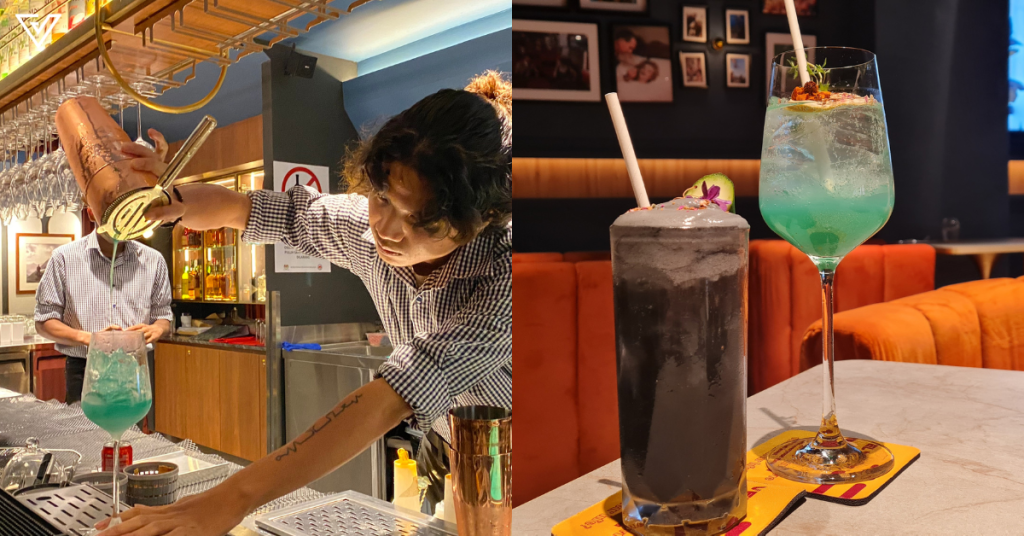
But it seems that Velvet wants to emphasise itself as being a communal space with all three sharing platters being a restaurant signature.
Back during its launch, GSC’s CEO, Koh Mei Lee, told Vulcan Post that the brand hopes to create an intimate social space for residents living around the neighbourhood. “My aspiration is that people from the community will come here often. It’s kind of like a cinema where everybody would know your name because you’re a regular.”
In fact, we noticed this happen during our visit when one of the diners had a personable conversation with the manager. We also found the service to be friendly and quite accommodating, so don’t be shy to voice out if you have any food allergies or preferences.
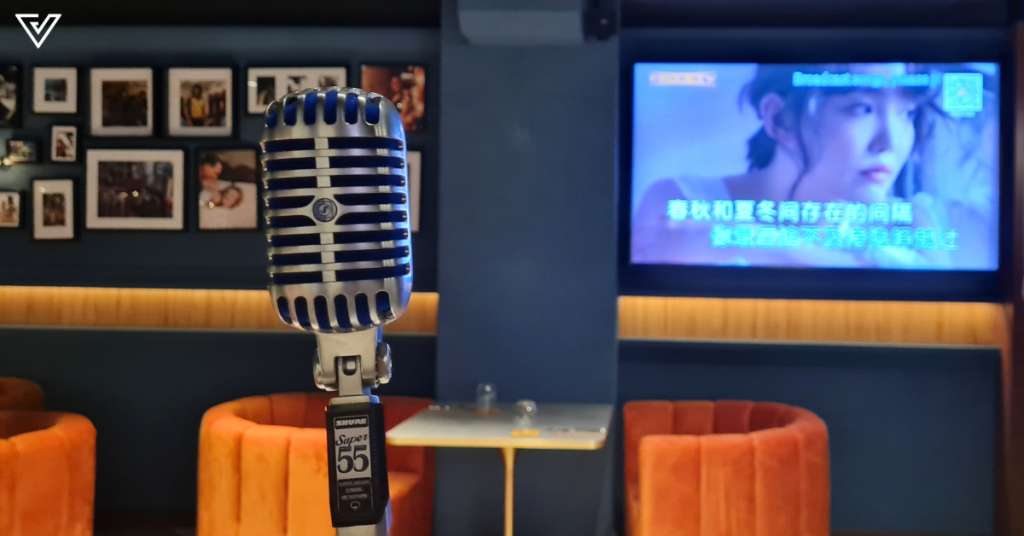
Looking at the bigger picture, it seems like opening an in-house restaurant is GSC’s way of keeping the crowd in their establishments, because people usually hang out elsewhere while waiting for their movie halls to open up.
Converting the usually vacant corridors into a more functional space helps bring in more traffic and adds another revenue stream to the brand.
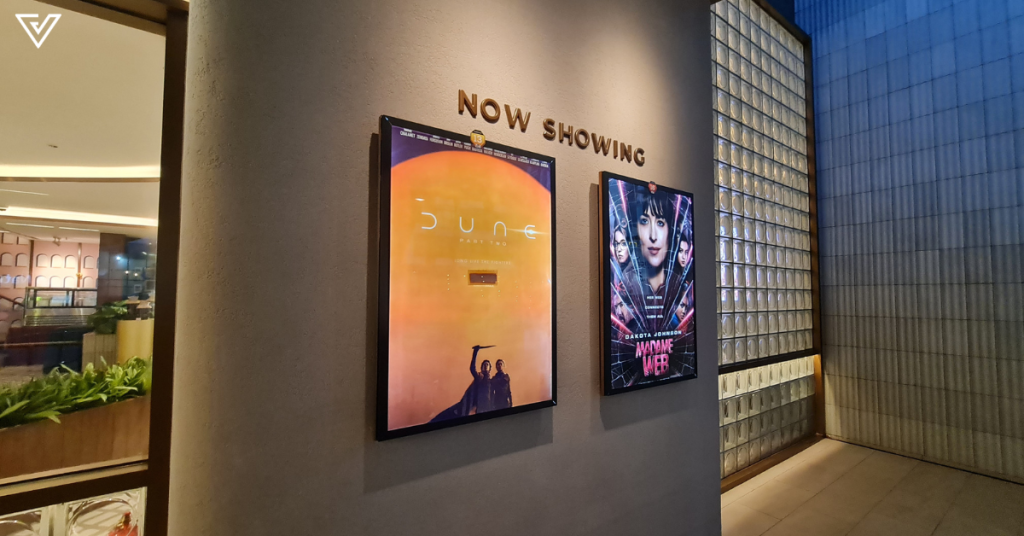
This is an approach that GSC seems to be committing to with its latest Aurum Theatre at The Exchange TRX also sporting several restaurants for everyday diners. It helps that they’re not taking the F&B aspect lightly either as the menu doesn’t serve your conventional cinema snacks.
While the USP of Velvet Cinemas is the combined experience of a good meal and a movie in one place, we wouldn’t be opposed to the idea of GSC simply launching more standalone F&B establishments. Perhaps that’s already in the works, and they’re just doing market validation with Velvet Cinemas and Aurum Theatre.
Also Read: Employees need a Copilot to boost productivity & ease brain drain. This webinar shows how.
Ant Group pumps in another S$200m into S’pore digibank ANEXT Bank
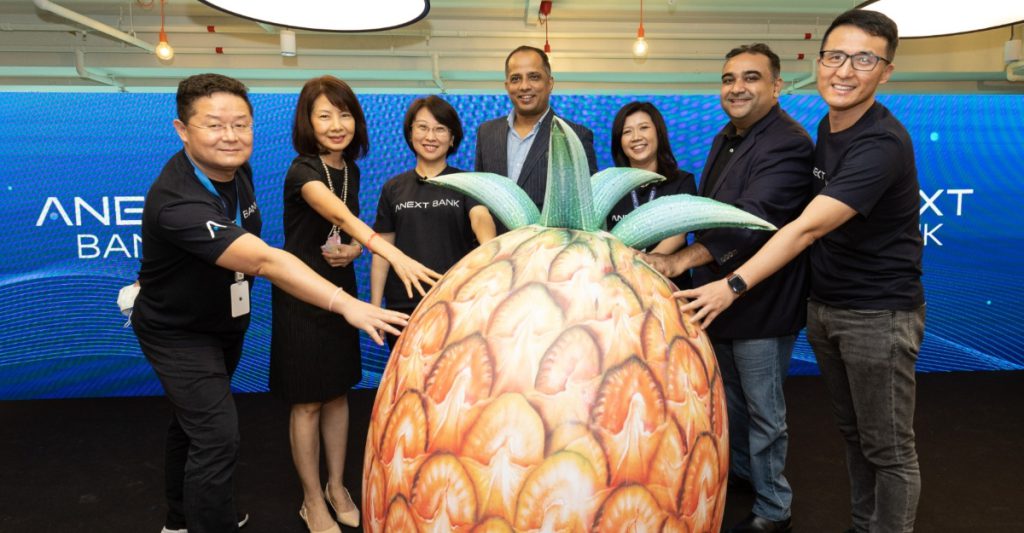
Alibaba’s Ant Group has made an additional S$200 million investment into ANEXT Bank, its wholly-owned subsidiary and SME digital bank, according to news reports made yesterday (March 25).
According to DealStreetAsia, the digital finance and tech giant previously pumped S$250 million into the digital bank, with the total investment amounting to approximately US$502.61 million.
This investment aims to spur Ant Group’s efforts in digital finances in Singapore and the Southeast Asian region following its receipt of a digital wholesale banking license from the Monetary Authority of Singapore (MAS) in late 2020.
ANEXT Bank has been making losses since its launch
However, the bank has reported an almost fivefold increase in financial losses, from about S$6,000 to S$33,000 in 2021 and 2022, respectively, despite earning S$3,195 in revenue in the latter year.
This investment is a critical move to ensure that the bank can continue empowering micro, small, and medium-sized enterprises (MSMEs) and championing financial inclusion. As of 2023, 78 per cent of ANEXT Bank’s Business Account customers are micro-businesses, and 51 per cent of ANEXT Bank’s business loan customers are MSMEs.
Ant Group launched its Singapore office in September 2023 as part of its global strategy. Speaking at the Singapore Fintech Festival that same year, Eric Jing, CEO of Ant Group, aims to capitalise on the increase in digital technology adoption in the ASEAN region.
Featured Image Credit: ANEXT Bank
Also Read: Ant Group CEO Eric Jing sheds light on Singapore expansion and going global
This M’sian started her leather crafts biz at 24, has served clients like Rolls-Royce & LV
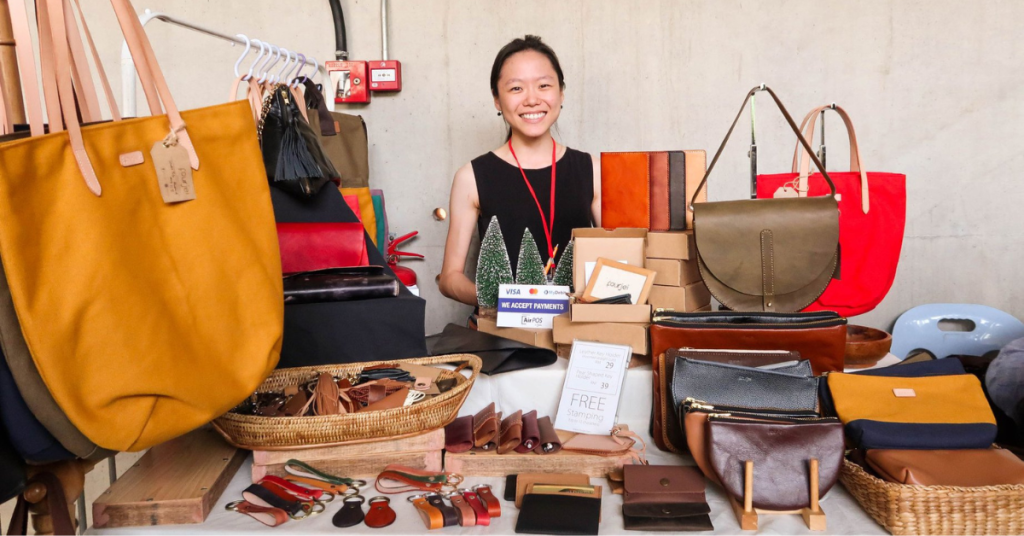
There’s a common belief that turning your hobby into a business would kill it. And to some degree, that may be true.
But Ngoo Sze Jie didn’t let that stop her from establishing Fourjei, a business selling premium handcrafted leather and canvas goods, at just 24 years old.
“I thought the best time to venture into something is when I have less commitment in life. The longer I wait, the less daring I’d become,” she stated.
So when her one-year contract with the architectural firm she was at was up, she figured it was now or never.
Nine years in, and she’s never looked back since.
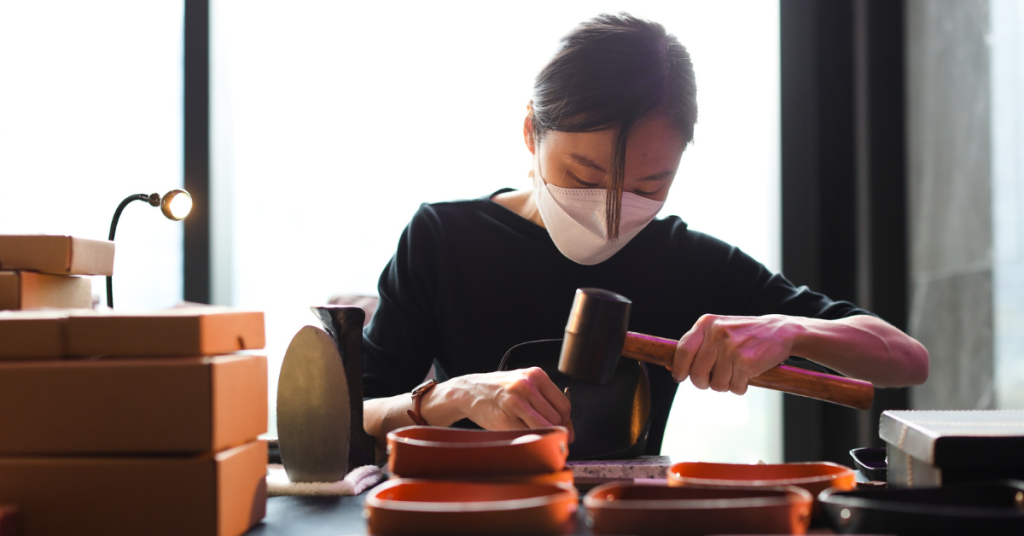
Taking a leap of faith
Fourjei initially began as a passion project in 2010 while Sze Jie was still an architecture student at USM (Universiti Sains Malaysia) in Penang. To wind down and earn some extra money, she would design and sew fabric bags, pouches, and accessories on semester breaks.
Needlework was a skill she picked up from her mum as a kid. It also helped that she had a passionate art teacher in primary school who encouraged her crafting interest.
Back then, she would hand-sew dresses and other clothes for her Barbie dolls. She’d even make miniature furniture to embellish her doll set.
This venture continued past her university days and became her part-time hustle while working as an assistant architect.
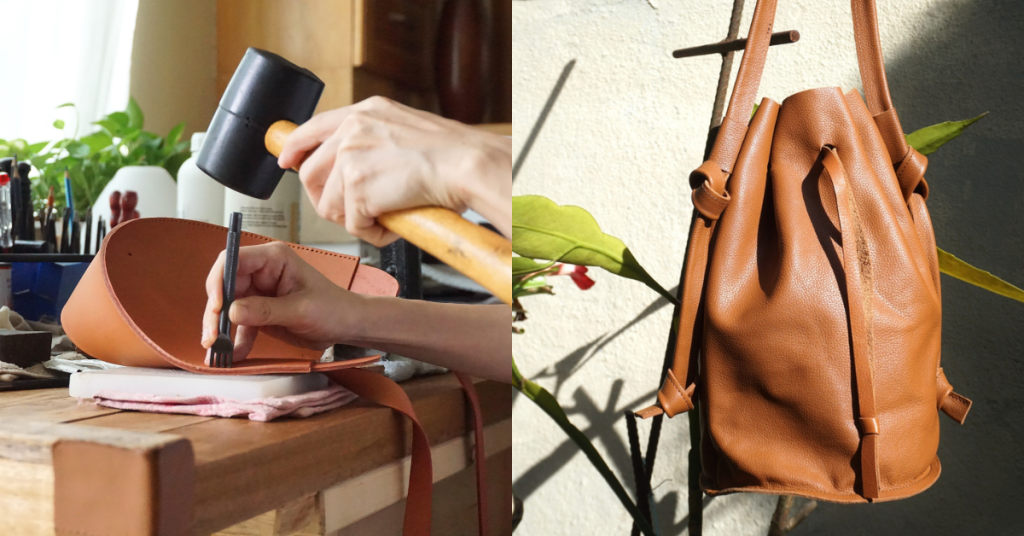
Throughout her one-year tenure at TR Hamzah & Yeang, Sze Jie found herself envisioning a future of just crafting.
“By practice, the architectural work of designing and constructing a building or township is a tedious and long process. It requires passion to enjoy and fully embrace the work culture in this industry,” she shared.
While working there, she found herself struggling to come to terms with working on screens and drawings for long hours. She instead enjoyed more hands-on work.
Hence she decided to take a leap of faith when the opportunity came.
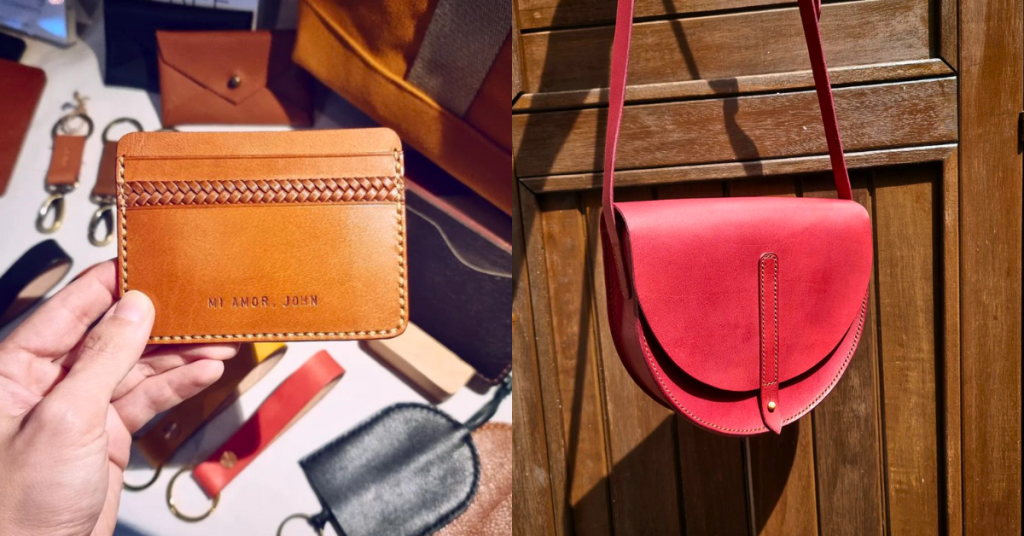
From architecture to leather craftswoman
Upon quitting her first architectural job, she decided to take up leather crafting to upskill and widen the business’ product range.
That’s how she landed in Bangkok, Thailand, for a leather crafting course hosted by an ex-architect.
For six days, Sze Jie and the other students learnt the step-by-step process of handcrafting leather from scratch. This included template-making, saddle stitching, and how to incorporate different metal fixtures into leather articles.
At the end of it, everyone showcased their works to the class. “I think that was the most memorable part of the course,” Sze Jie recalled. “I got to ‘fast track’ my learning by observing how different bags are made since everybody took up unique projects.”
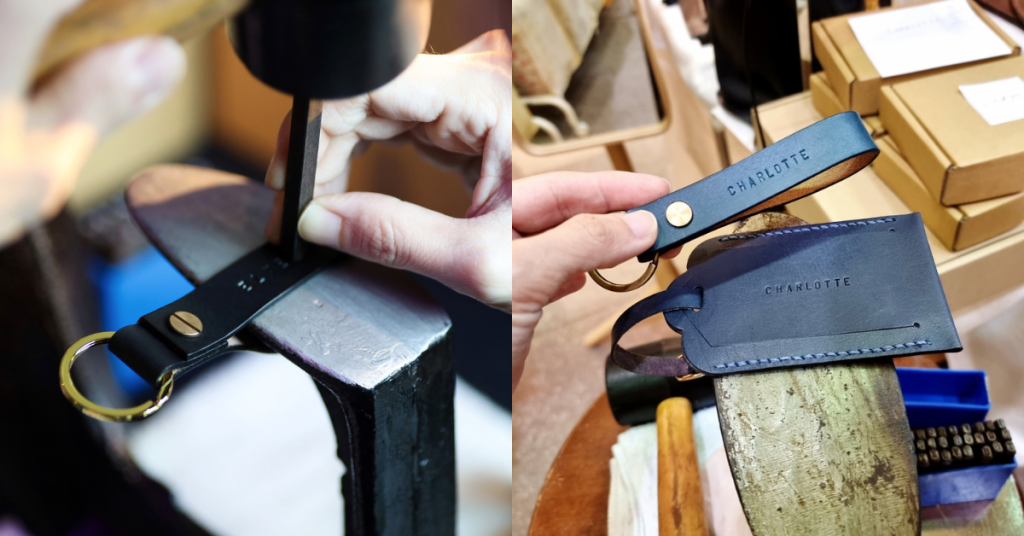
Afterwards, she returned to Malaysia and officially launched Fourjei as her registered full-time venture.
The business began selling only canvas totes and bags together with some leather key holders. Sze Jie would frequently join pop-up events to get the word out while also getting in tune with market preferences.
Over time, Fourjei’s catalogue expanded to meet the demands of different customer segments. Most of her products are gender-neutral which helps make them more appealing to a wider audience, particularly to those shopping for others.
Her best-selling products include the sunglasses case (RM220), Anne half-moon bag (RM690), and card holders and wallets (starts from RM79).
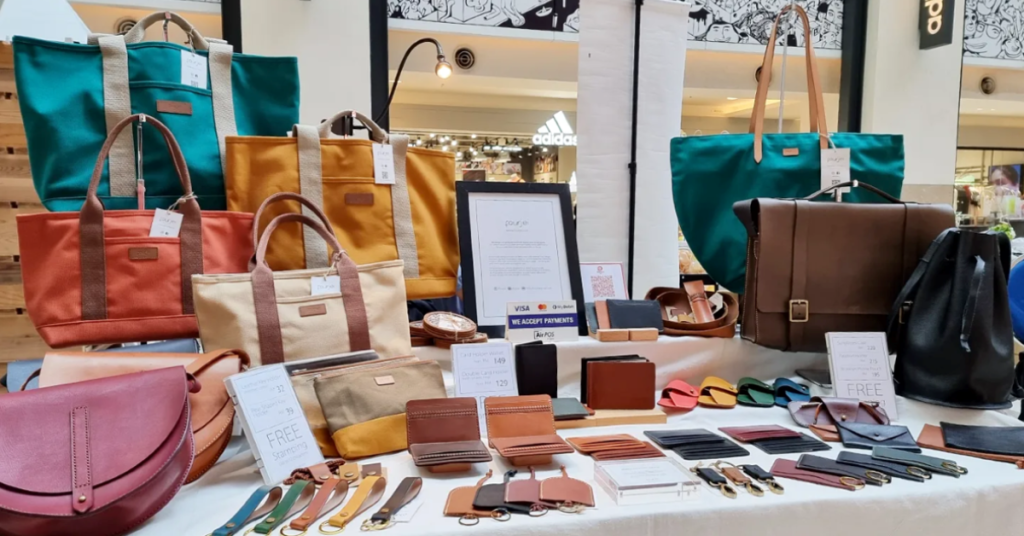
A worthy trade-off
All of Fourjei’s products are still made by Sze Jie herself. Occasionally the brand would hire part-timers to assist at pop-up and corporate events.
She usually makes each item in small batches to save time and be more cost efficient. A leather bag would take up to three days to make, while 20 card holders of different colours would take at least a week.
More complex bags require more time for R&D. Unconventional material combinations like fabrics and leather also need a few rounds of trial and error to get right.
“We’re a profitable business although speaking frankly, it’s not the job you would stick with if you want a lavish lifestyle,” Sze Jie confided. “But I find this trade-off worth it because I have flexibility and full control of my time and the business.”
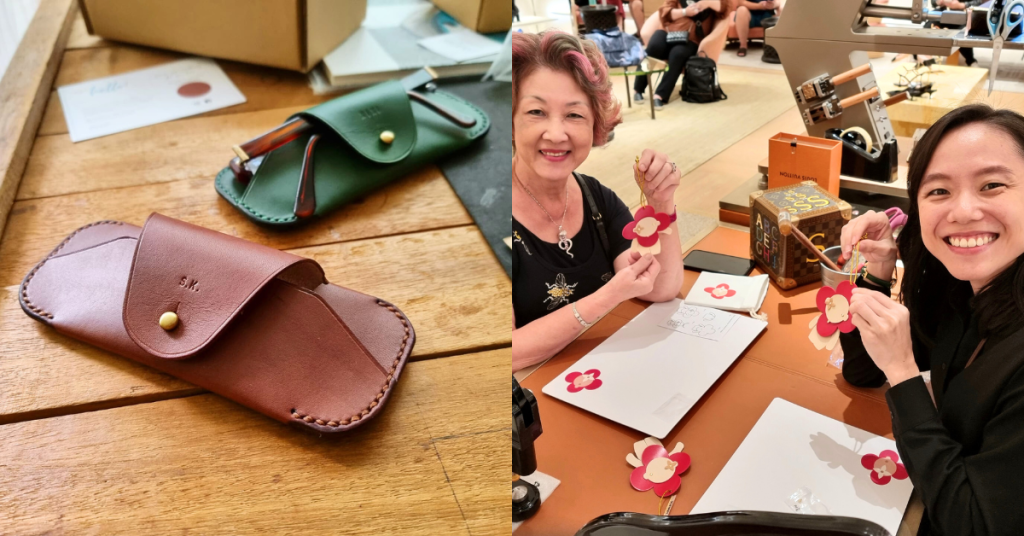
Despite being a small business, she’s discovered three key ways to keep it sustainable:
- Making sure she’s actually paid for her hard work
- Being diligent with the business’s accounting and making necessary adjustments to cut costs and improve sales
- Cutting down on material waste by turning remnants into smaller leather or canvas goods
Fourjei just turned nine years old in February so it’s safe to say that these practices work for her.
Sze Jie also credited the corporate orders she received in her first year for spurring the business’s growth.
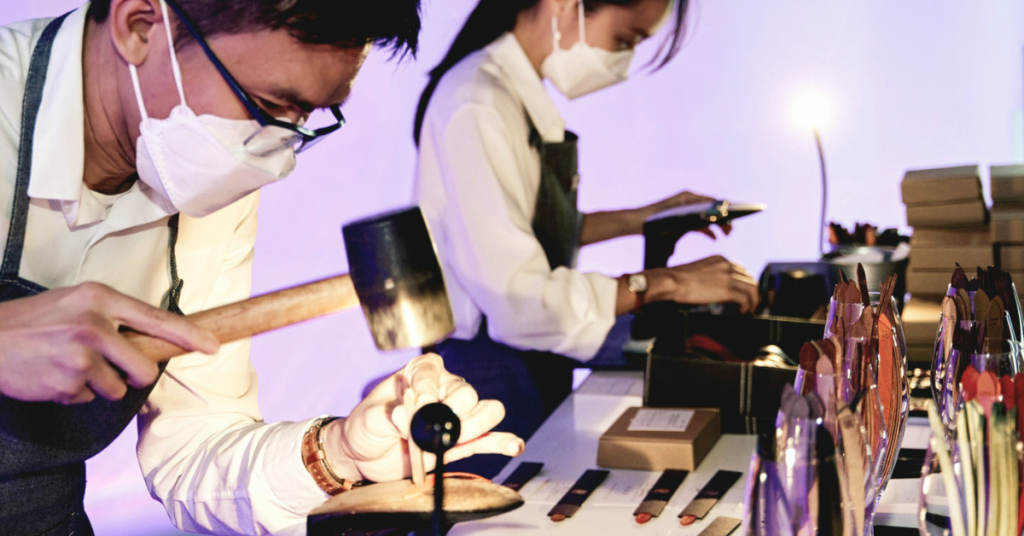
Success is personal to everyone
That said, one key challenge the brand has been facing is the rise of vegan leather in recent years.
It’s being marketed as a more environmentally-conscious option when they’re actually made from plastics. For context, Harpers Bazaar clarifies that most vegan leathers are made of PVC and PU, both of which are petroleum-based plastics.
In contrast, Sze Jie said that raw hides used by tanneries are often by-products from the food industry, meaning animals aren’t killed just for their skin. Genuine leather is also more durable which makes them greener.
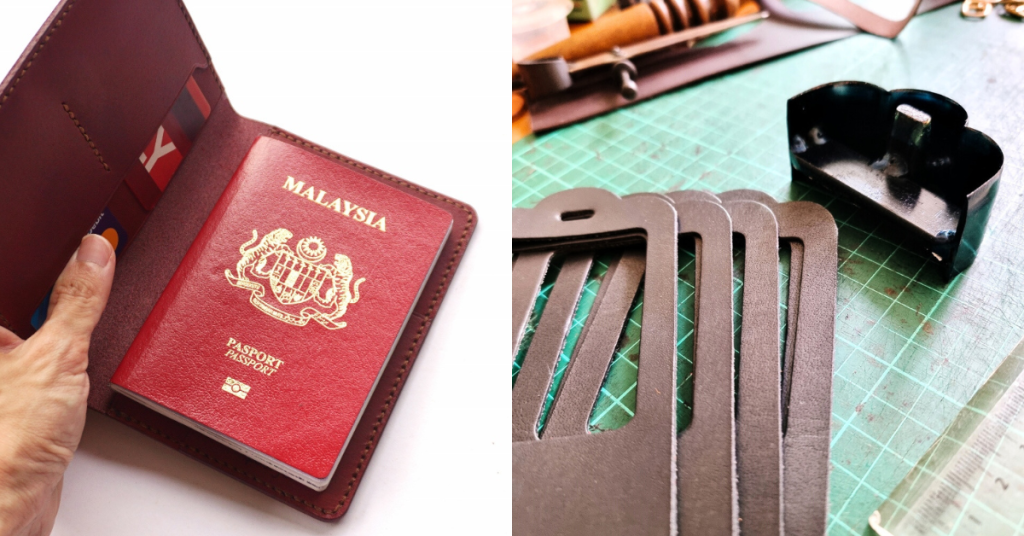
This is something that Sze Jie hopes to bring awareness to, alongside educating people on the value of handcrafted leather goods. Particularly as there are pricing disparities compared to mass-produced labels and international fashion houses.
In the long run, though, she doesn’t really have a long-term plan for Fourjei. Her focus is to continue making products that can last a lifetime and stay relevant in the market.
“To me, success for the brand means having a level of reputation of being well-established and known for its quality products,” she stated.
“I think being a niche, handmade and homegrown brand itself is already something to be proud of.”
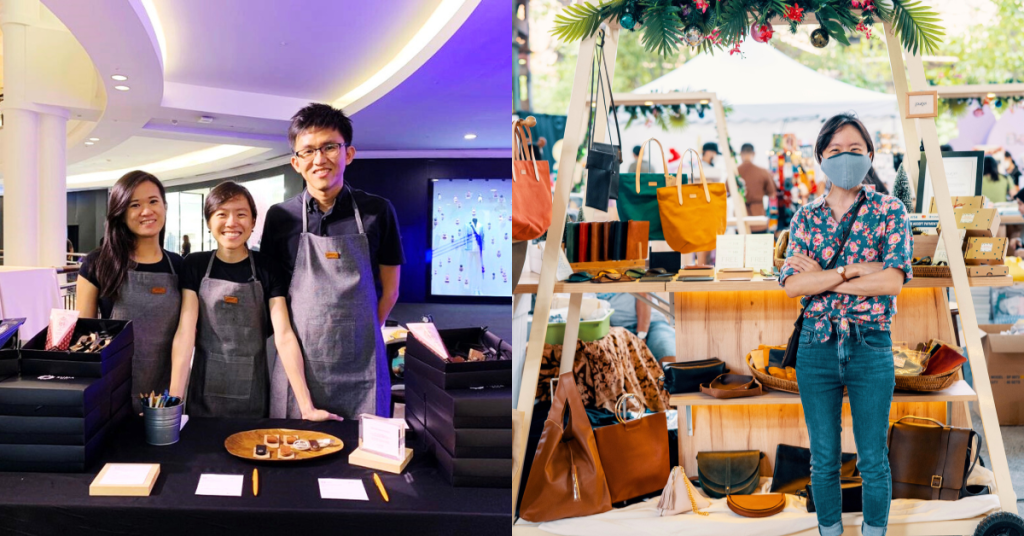
Also Read: The Tokyo govt wants to grow MY & SG startups in Japan, here’s how entrepreneurs can benefit
Featured Image Credit: Fourjei